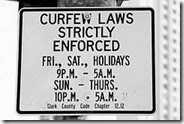I have confession to make. I’m a Jew who loves Christmas. I knew it from an early age. We’d leave temple on a December Friday night and swing by a few streets on the way home to check out the lights. I loved going to Feeney’s garden center in Feasterville, PA, to see the decorated trees and Christmas displays. Some of my best childhood memories are riding the bus downtown with my Grandmom Annie to see the Christmas Light Show at Wanamaker’s and the Enchanted Colonial Village at Lit Brothers. And, I couldn’t wait for A Charlie Brown Christmas and Rudolph the Red-Nosed Reindeer to air each year.
Now, I am part of an interfaith family, in which we celebrate both Hanukkah and Christmas. I’m so proud of my seven-year-old daughter, who, earlier this week, visited with her old first-grade teacher to share the story of Hanukkah with this year’s batch of first graders.
Despite my Jewish roots, I jokingly say I am 13 in Christmas years, since this the 13th Christmas my wife and I have spent together. And, For the record, despite my religiously diverse family, and despite Jon Stewart’s opposition of the “War on Christmas,” I am not opposed to people wishing others a “Merry Christmas.”
So, pick your poison: Merry Christmas, Happy (belated) Hanukkah, Happy Kwanzaa, or Happy Holidays. Whichever you choose, have a joy-filled December.
Here’s the rest of what I read the last two weeks:
Discrimination
- “Weight” Of Authority Leads To Denial Of Employer’s Summary Judgment Motion In Hotly Contested EEOC Pregnancy Discrimination Lawsuit — from EEOC Year-End Countdown
- Pregnancy isn't a workplace disability, but how about morning sickness? — from Eric Meyer’s The Employer Handbook Blog
- When employee has difficult pregnancy, don’t get creative with FMLA, ADA — from Business Management Daily
- Employee Who Was Repeatedly Sniffed by Co-Workers and Fired For Swatting a Fly May Bring Retaliation Claim — from The Employment Brief
- Employee Discrimination on a Genetic Level — from Corporate Counsel
- Termination of employee for entering alcohol rehab after a last chance agreement not necessarily a violation of the ADA — from Employment Law Matters
- Appellate Court Upholds Summary Judgment for Employer — from Dan Schwartz’s Connecticut Employment Law Blog
- Take Two? EEOC Moves For Reconsideration After Losing High-Profile Religious Discrimination Case Over Abercrombie’s “Look Policy” — from EEOC Year-End Countdown
Social Media & Workplace Technology
- “Using Social Media to Discriminate”: Please Read the Fine Print — from Currents: Hot Topics in Employment Law
- Email, Twitter and the always-on lifestyle: Today’s double-edged sword — from Boy Genius Report
- Cyber Monday is Here - 54% of Workers to Shop Online at Work this Season — from Phil Miles’ Lawffice Space
- With a Few Clicks of the Mouse You Can Uncover What Job Applicants Leave Off Their Resumes — from Employment Law Lookout
- How BYOD Can Really Help to Change the Way You Hire — from TLNT
- BYOD Policy and Best Practices for When Employees Leave — from i-Sight Investigation Software Blog
- How Corporations are Responding to BYOD — from Social Media Strategies Summit Blog
HR & Employee Relations
- Children’s Books Helped Shape the American Workplace, Says the DOL — from HR Daily Advisor
- Reining in the costs of the U.S. litigation system — from PointOfLaw Forum
- What Your Employees Steal May Be Used Against You In a Court of Law — from Molly DiBianca’s Delaware Employment Law Blog
- Incivility… The Signs Aren’t Always Obvious — from Fistful of Talent
- Happy Birthday to the FACTA! The Often Forgotten Law that Imposes Obligations and Provides Helpful — from Employer Law Report
Wage & Hour
- Seventh Circuit Finds Insurance Company’s Internal “Answer Man” Proper Classified as Exempt Administrative Employee — from Wage and Hour Law Update
- New York Federal District Court Endorses Use of Fluctuating Workweek Overtime Payment Method Where Employer Pays Performance-Based Bonuses to Non-Exempt Salaried Employees — from Employment Matters Blog
- Pending Legislation Alert: FLSA Notices On Worker Classifications — from Mike Haberman’s Omega HR Solutions
- Are Your Employees Properly Classified Under the FLSA? — from The Emplawyerologist
- ERISA & The Affordable Care Act: A Primer — from The L•E•Jer
Labor Relations
- “Americanized Labor Policy Is Spreading in Europe” — from Overlawyered
- Walmart Should Have Listened To Me About Firing Striking Workers — from Donna Ballman’s Screw You Guys, I’m Going Home
- No Solicitation / No Distribution Policies Must be Applied Evenly — from Matt Austin Labor Law
- Court Rejects NLRB’s D.H. Horton Decision Invalidating Limits on Class Arbitration — from Wyatt Employment Law Report
- NLRB's GC Determines That Employees Must Expressly Invoke Their Right to Access Employer Property When They are Part of a Larger Group — from Vorys on Labor



